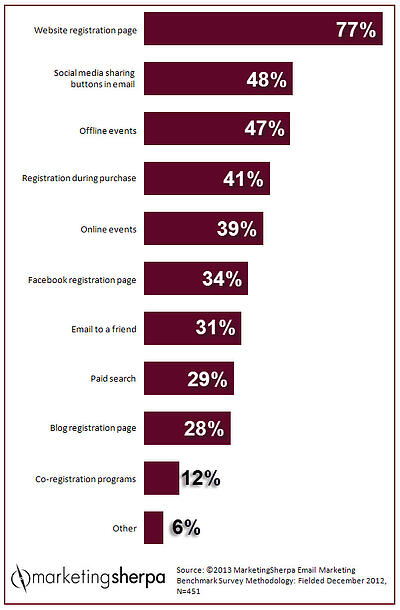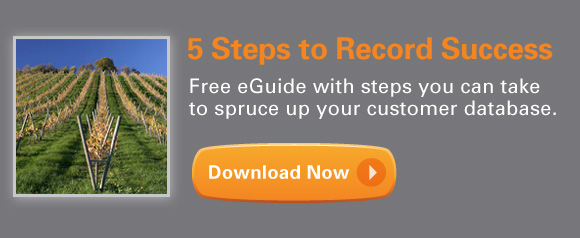
In honor of spring, we’re putting together a series of posts to help you tidy your business activities.
Your Contact Database — A Core Marketing Asset
Your contact database is like a vegetable garden, and like a garden, it needs to be tended or else your yield will diminish over time. Here are some tips for sprucing up your list.
Prepping the soil
When we begin work with a client, before we can help them execute an email campaign, for example, we first need to assess what kind of shape their existing database is in, if they have one at all. Many times we find these lists to be out of date, fragmented (each salesperson has their own list), or incomplete (some but not all customers are in a database). Making sure the contacts are updated and in a singular location where they can properly “grow” is the first priority.
Seeding
If your database is lacking in numbers, you might need to plant more contacts. Converting web visitors to leads is a great way to grow your list. Compelling Calls to Action that invite visitors to enter minimal information (e.g., email, name, company) in exchange for downloads of valuable content such as eBooks, white papers and other offers will grow your list over time. Cultivate leads from your existing network and use social channels to promote your content and offers. And don’t forget to add all those business cards from trade shows and meetings – you’d be surprised how often we encounter a stack of business cards not entered into the contact database. Read our blog post on trade show follow up best practices and dealing with business cards.

Most used tactics to drive email list growth via MarketingSherpa
Weeding
As you accumulate more and more contacts, your database can become cluttered. You might accidentally enter a contact that is already in the list or forget about someone you haven’t contacted in a while – and meanwhile their email has changed. Start by getting rid of duplicate contacts and non-working emails. Send an email, then update and get rid of those addresses that bounce. Make sure you don't delete a contact completely — just the bad email address. While more is generally better when it comes to your database, eliminating the “bad seeds” will help you put your time and resources to better use.
Pruning & Watering
Times are constantly a-changin’. Periodically check to make sure the information you have on your contacts is still accurate. You probably email some of your contacts more than others, but don’t let anyone go unnoticed for more than a few months. Even if you don’t have any new, relevant information for a certain group of contacts, sending a quarterly newsletter is a good way to weed out bad email addresses and a friendly way to stay connected and remind them of your brand. Cover all your bases – if you only have their company address, try to also obtain their email address, phone number, even Twitter handle. LinkedIn and other social networds are great resources to stay up to date on customers information and activities.
Crop Rotation
Just as soil becomes unreceptive to crops if you don’t switch up what you plant from year to year, customers can become less receptive to your company and message if you inundate them with info and offers that aren’t relevant to them. When one of our clients accidently blasted an email to their entire list rather than a pre-designated segment, they saw an uptick in unsubscribes from contacts in unrelated groups. If people opt out of your emails, you can no longer reach them with content that they might actually find valuable.
To make sure people receive the appropriate messages, don’t send them every piece of info or offer you have. Instead, separate leads into A, B, and C or hot, warm, and cooler leads; if you sell to various markets, make sure you aren’t sending medical product information to your contacts in aerospace, for example. Some general-purpose information, such as that company newsletter, is suitable for a broader audience. Better audience targeting will make customers more likely to respond to what you have to say.
A Small Change, a blog focused on fundraising for non-profits, stresses the importance of having someone in your organization whose job it is to manage and understand your database. They also suggest training other members of your staff to input contacts in the database and creating a “culture that values data.” “If you do not use the database or are not a champion for accurate data then your staff and co-workers will not be either.”
Though it does take time and effort, a better database will ultimately be worth your while. You’ll see an improvement in click-through rates and engagement because the right people will receive your carefully-constructed content. Now get those green thumbs moving!

